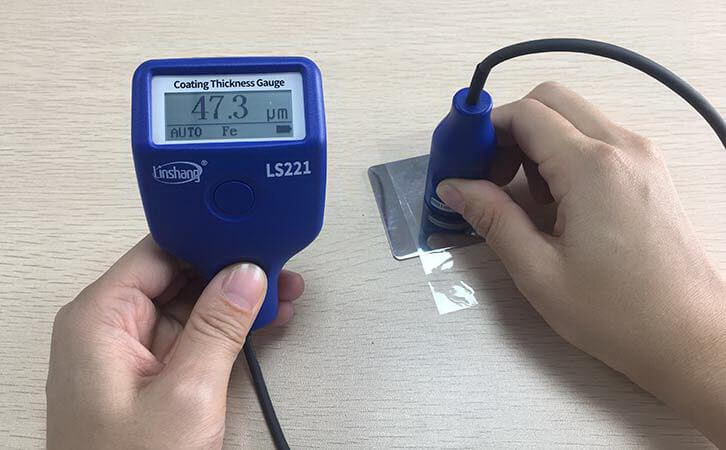How to Choose Plastic Film with Paint Thickness Meter?
Plastic film is very common in our lives. Whether it is high-tech industry, food producers, greenhouse farmers or housewives, it is inseparable from the plastic film. For different applications, we also need to use plastic films with different thickness and quality, so a paint thickness meter is needed to help check the film thickness.
1. why do we use a paint thickness meter to measure the material thickness?
There are many types of plastic films, including PVA-coated high barrier films, biaxially oriented polypropylene films (BOPP), low-density polyethylene films (LDPE) and polyester films (PET). There is also a huge difference in their thickness, which can range from a few micrometers to several hundred micrometers. This difference can directly affect the plastic films performance and the use of plastic films. For ordinary plastic films, such as agricultural films, household films, glass films, etc., The thickness uniformity requirements of plastic films are generally not too high. However, for some special materials, such as packaging materials, insulation materials and photosensitive materials, these are linked to physical factors such as tensile strength, impact resistance and barrier properties of the product, so contact thickness measurement is required. These special materials often require high precision. Therefore, a paint thickness meter is used to detect the coating thickness of some expensive coating materials. At the same time, the overall thickness of the film is tested to achieve effective control of the film thickness. This is also a very economical means.
2. Advantages, principles and application of paint thickness meters
The advantages of using a paint thickness meter to measure plastic films are as follows:
(1) Non-destructive measurement. The paint thickness meter has high accuracy, simple operation and fast reading
(2) The instrument can ensure the measurement accuracy and improve the product qualification rate
(3) Wide range of applications, capable of testing the plastic films performance
At present, the basic principles of paint thickness meters widely used are roughly two types: magnetic thickness measurement and eddy current thickness measurement. The paint thickness meter of the magnetic induction principle is to further determine the paint thickness by passing through the part without ferromagnetic covering to receive the magnetic flux flowing into the ferromagnetic substrate. The eddy current principle is that the probe coil has an AC signal. This AC signal is high-frequency and can generate an electromagnetic field. When the probe is close to the tested sample, a corresponding degree of eddy current can be generated, which is very suitable for the coating thickness measurement on non-ferromagnetic metal materials. If you want to choose a plastic film, you can choose a paint thickness meter based on this principle.
3. So how do we use a paint thickness meter to select a suitable plastic film?
The paint thickness meter researched and developed by Linshang Technology has four models: LS220H, LS221, LS223 with F3N3 probe and LS223 with F5N3 probe. For the simple measurement of plastic film, we can choose the range of 0-2000 microns. The Linshang paint thickness meter has simple operation and accurate data. The measurement accuracy can also be controlled accurately as ≤ ± (3% of reading + 2μm). For some special plastic film materials, you can choose a range of 0μm-3000μm: ≤ ± (3% of reading + 2μm), 3000μm-5000μm: ≤ ± (5% of reading + 2μm). The data is very accurate and can meet the testing standards of the Chinese National Metrology Institute.
- High precision coating thickness gauge for used car
- Automotive paint protection films coating thickness gauge
- Plating Thickness Measuring Instrument for Detecting Anti-corrosion Coating
- Linshang LS220, LS191, LS160A– Necessary for Car Cover Inspection
- Coating Thickness Gauge for Second Hand Vehicle
- Zero Adjustment Step of Coating Thickness Gauge
